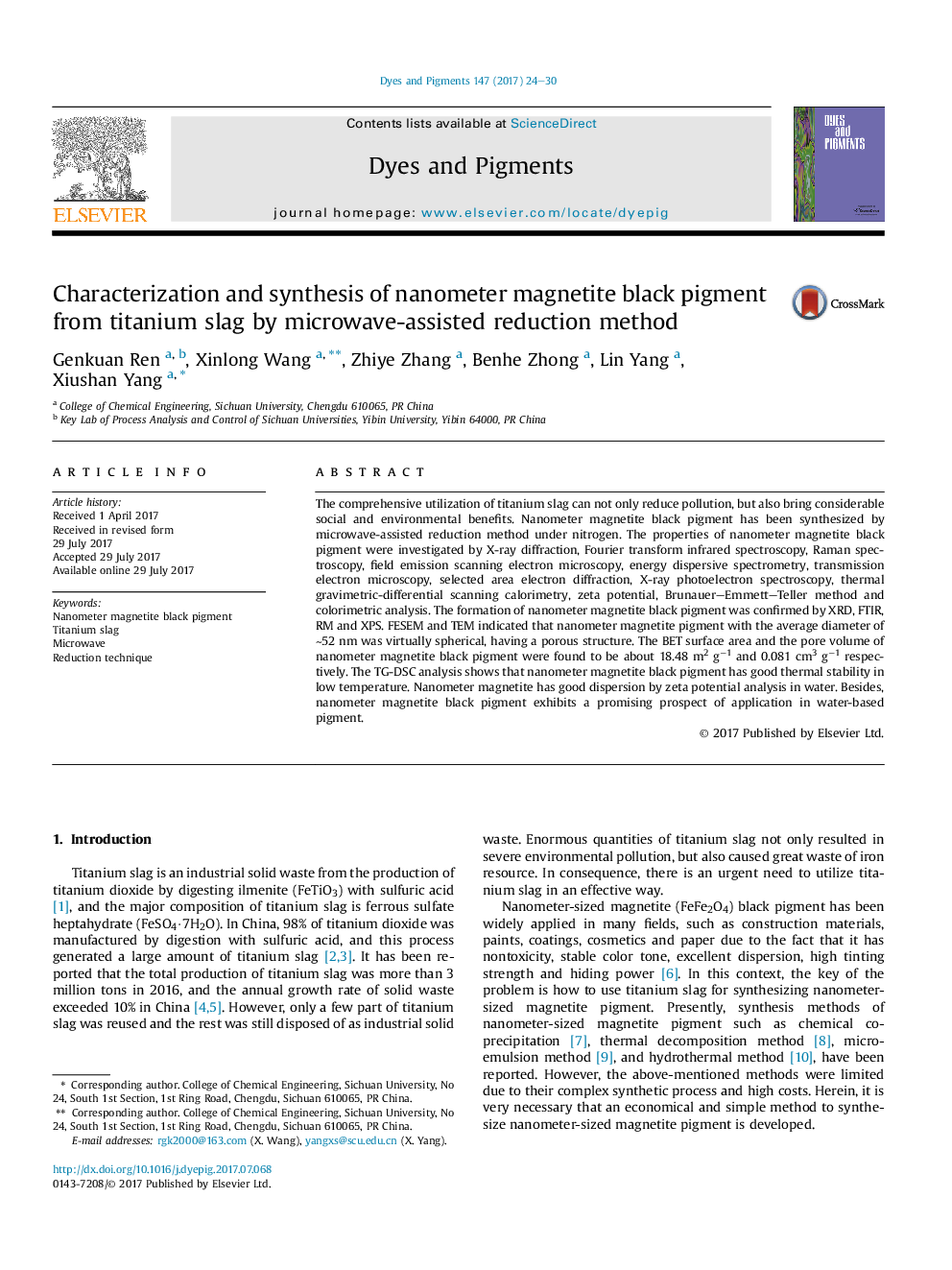| Article ID | Journal | Published Year | Pages | File Type |
|---|---|---|---|---|
| 4765636 | Dyes and Pigments | 2017 | 7 Pages |
Abstract
The comprehensive utilization of titanium slag can not only reduce pollution, but also bring considerable social and environmental benefits. Nanometer magnetite black pigment has been synthesized by microwave-assisted reduction method under nitrogen. The properties of nanometer magnetite black pigment were investigated by X-ray diffraction, Fourier transform infrared spectroscopy, Raman spectroscopy, field emission scanning electron microscopy, energy dispersive spectrometry, transmission electron microscopy, selected area electron diffraction, X-ray photoelectron spectroscopy, thermal gravimetric-differential scanning calorimetry, zeta potential, Brunauer-Emmett-Teller method and colorimetric analysis. The formation of nanometer magnetite black pigment was confirmed by XRD, FTIR, RM and XPS. FESEM and TEM indicated that nanometer magnetite pigment with the average diameter of â¼52Â nm was virtually spherical, having a porous structure. The BET surface area and the pore volume of nanometer magnetite black pigment were found to be about 18.48Â m2Â gâ1 and 0.081Â cm3Â gâ1 respectively. The TG-DSC analysis shows that nanometer magnetite black pigment has good thermal stability in low temperature. Nanometer magnetite has good dispersion by zeta potential analysis in water. Besides, nanometer magnetite black pigment exhibits a promising prospect of application in water-based pigment.
Related Topics
Physical Sciences and Engineering
Chemical Engineering
Chemical Engineering (General)
Authors
Genkuan Ren, Xinlong Wang, Zhiye Zhang, Benhe Zhong, Lin Yang, Xiushan Yang,
